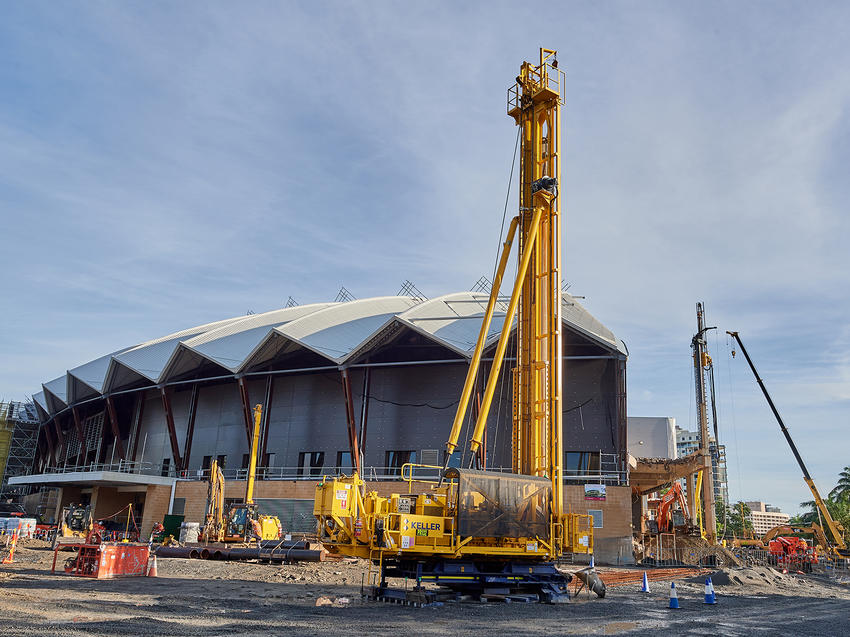Cairns Convention Centre is undergoing a major A$180 million expansion – with Keller Australia showcasing its range of geotechnical techniques to help the project get off the ground. We caught up with Project Manager Benn Zabawa to find out more.

Cairns Convention Centre is undergoing a major A$180 million expansion – with Keller Australia showcasing its range of geotechnical techniques to help the project get off the ground. We caught up with Project Manager Benn Zabawa to find out more.
Twice voted the world’s best congress centre, Cairns Convention Centre is undergoing a significant refurbishment and 10,000m2 expansion, set to include a stunning tropically planted forecourt, plenary lecture space, meeting rooms, exhibition space, banqueting facility and more.
This is the second expansion in the centre’s 25-year history and is scheduled for completion in 2022.
Based on a competitive price and its technical experience, Keller was chosen by general contractor Lendlease to design and construct the foundation works.
Optimising the design
“The ground conditions in Cairns, with around 10m of extremely soft, silty marine clay over dense sands and stiff clay, is perfect for enlarged base Franki piles – and we’re one of only two companies in Australia that can do them,” says Benn Zabawa, Project Manager.
Keller’s unmatched breadth of expertise means it can value engineer a project by combining different techniques and optimising pile layout to create efficiencies. So, alongside the 450mm Franki piles designed to support the proposed structure’s individual columns, the scope also includes 900mm continuous flight auger (CFA) piles for the high loads. Added to the mix are 400mm driven tube piles and 150mm micropiles – both for areas where there’s limited headroom due to the existing building. Rounding out the design is 100 linear metres of sheet piling for retention of the lift cores.
Keller started on site in October 2020, installing the steel tube piles, before the project hit delays. The schedule was pushed back to early 2021, by which time the crew had to work around extreme wet weather and even cyclones.
Coordinating works
One of the biggest challenges was safely coordinating the two Franki rigs, CFA rig, sheet piling plant, low headroom piling rigs and materials on a multilevel site with only one access point, close to the existing building.
However, the crew was able to benefit from some Keller research and development innovation. Franki rigs are normally ‘walking’ machinery, but Keller’s plant experts had converted this rig to use caterpillar tracks, enabling it to move around much quicker.
Things were made more complex due to existing stone columns and metre-thick stabilised sand in various locations across the site – both due to past projects. “We really had no idea how big the columns were or how well compacted, so we used a mini pre-drill rig to help get through,” says Benn.
Maximising production
The project wrapped up in early May, and despite the challenges presented by weather delays and a complex site, Benn was pleased with the quality of the work and the crew’s ability to sequence several techniques safely to maximise production.
“Keller has again demonstrated that we have the expertise to design and deliver a range of solutions for some of the country’s most important construction projects.”